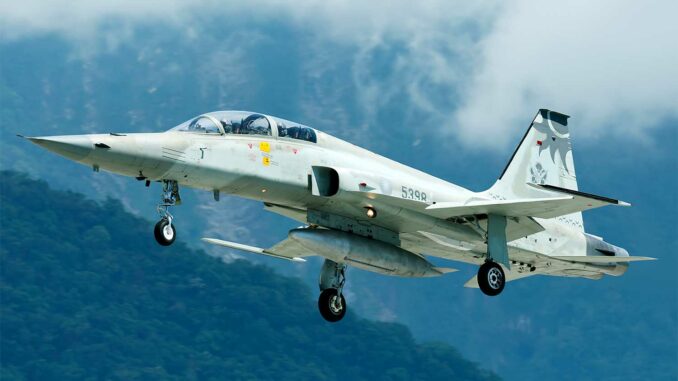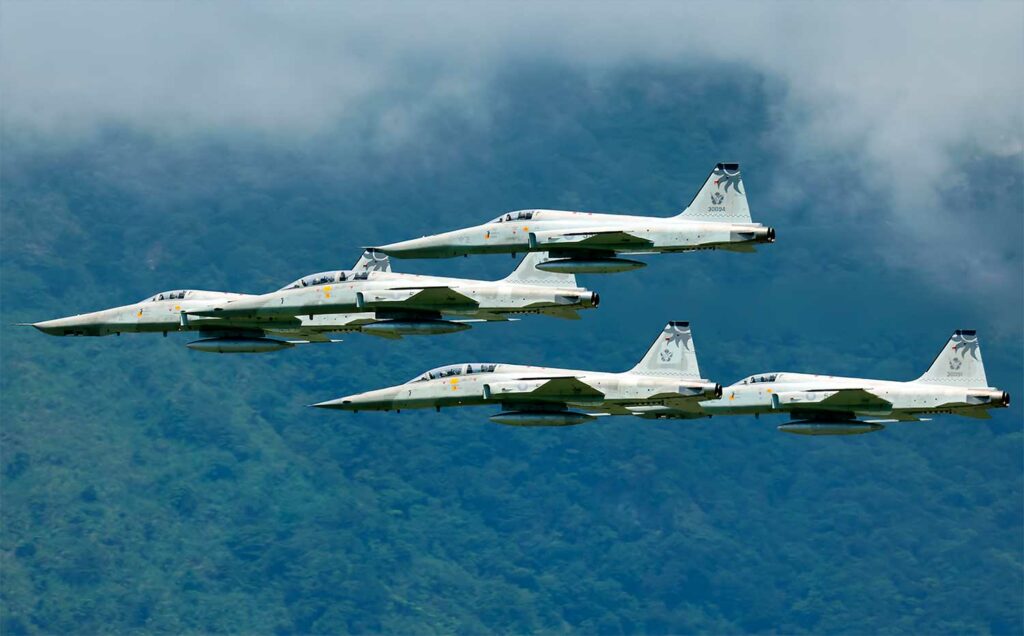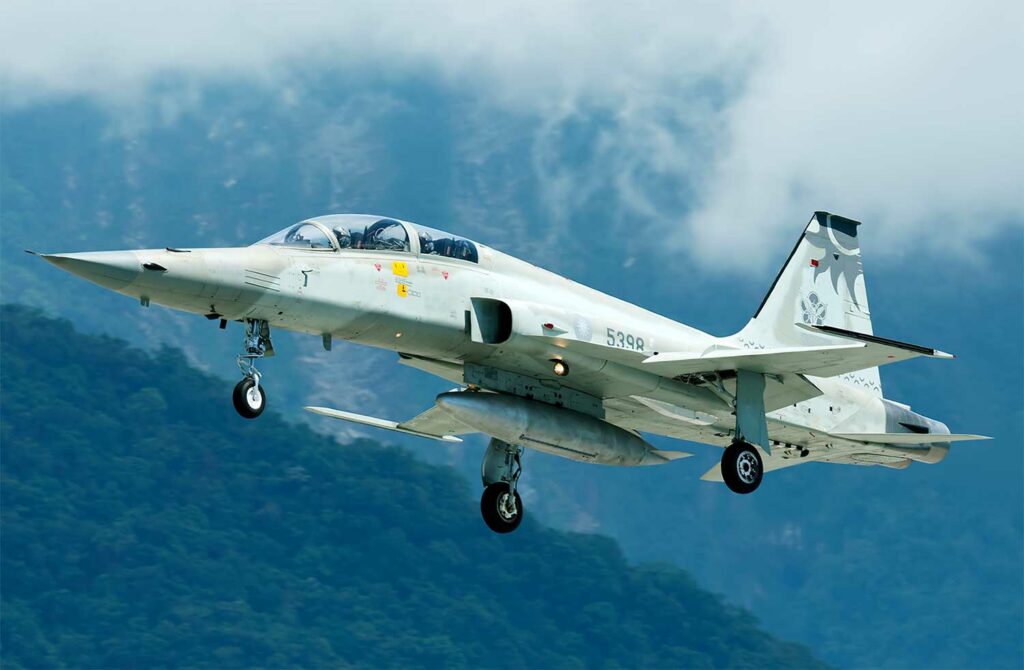
A detailed technical overview of the air forces that use the Northrop F-5 Freedom Fighter: fleets, operational status, missions, successes, and modernization.
The Northrop F-5: a fast, fuel-efficient, and versatile light fighter jet
The Northrop F-5 Freedom Fighter is a light supersonic fighter aircraft, initially privately funded in the late 1950s. It is designed around two General Electric J85 turbojet engines to offer high maneuverability, low maintenance costs, and technical simplicity ([Military Wiki][1]). It was available in two-seat training versions, reconnaissance (RF-5), and a modernized Tiger II (F-5E/F) variant with improved avionics. More than 3,800 F-5s and T-38 Talons were produced.
The role of the Northrop F-5 in military aviation is multifaceted: daytime air superiority, ground support, pilot training, and adversary training.

Forces in service: current users and fleet status
By mid-2025, around 40 countries had operated the F-5. Several still have operational aircraft. The most significant operators are as follows:
- Taiwan: with up to 336 aircraft, including around 100 built locally, was the largest user. Official retirement in July 2025.
- Brazil: approximately 79 aircraft ordered. In 2024, 35 F-5EMs and 4 F-5FMs are operational. A gradual withdrawal is planned between 2022 and 2029, to be replaced by the JAS 39 Gripen.
- Chile: acquired in the 1970s, upgraded to Tiger III standard; 13 aircraft still in service in 2024.
- Botswana: approximately 11 CF-5A and 4 CF-5D aircraft in service in 2024.
- Kenya: 18 F-5EM and 5 F-5FM, i.e. 23 aircraft operational in 2024.
- Mexico: in 2024, 3 F-5E and 1 F-5F in service.
- Morocco: 22 F-5E and 4 F-5F, upgraded to Tiger III.
- South Korea: of 340 received, 138 F-5E and 29 F-5F still in service in 2024.
- Spain: 19 F-5BM still used for pilot training in 2024.
- Switzerland: a former major operator, the Patrouille Suisse continues to use 6 F-5E Tiger II for aerobatic demonstrations.
- Thailand: initially 40 F-5A/E and 6 F-5F. In 2023, approximately 30 F-5T and 4 F-5F modernized (Super Tigris) remain operational.
- Tunisia: 15 aircraft in service in 2021, used in particular for counterinsurgency missions.
- Iran: an estimated 35 F-5E and 15 F-5F still operational in 2024. However, their operational status is severely limited by sanctions.
In total, it is estimated that approximately 400 to 500 F-5s remain in service worldwide.
Notable missions and operational record
Skoshi Tiger Project – Vietnam (1965–1967)
- 12 F-5Cs modified (tanks, refueling probe, armor) deployed in Vietnam.
- More than 2,600 combat sorties in six months, with one combat loss.
- Renamed the 10th Fighter Commando Squadron (10th FCS), it flew up to 7,300 sorties before ceasing operations in April 1967.
Iran–Iraq War (1980s)
- An Iranian F-5 reportedly shot down a MiG-25, a technologically superior opponent, during the conflict.
Ground support and counterinsurgency missions
- Tunisia: used in the fight against Ansar al-Sharia in the Chaambi Mountains.
- Kenya: air support against Al-Shabab in Somalia during Operation Linda Nchi (2011).
Training and adversary roles
- In the United States, the F-5 is still used as a phantom adversary in the Navy and Marine Corps aggressor squadrons.

Strengths, limitations, and modernization
Key strengths of the Northrop F-5 fighter
- Reliable, economical, easy to maintain, suitable for medium-sized air forces.
- Versatile, capable of air superiority, ground support, reconnaissance, and training.
- Successful upgrades: examples in Brazil (F-5EM/F-5FM), Chile (Tiger III), and Thailand (Super Tigris).
Limitations to consider
- Aging performance: modest supersonic speed, limited range.
- Outdated avionics: logistical difficulties for countries such as Iran.
- Replacement in progress: Taiwan is turning to the F-16V, Brazil to the Gripen, and Switzerland to the F-35.
What the future holds for the aircraft
The Northrop F-5 can no longer compete with modern fighter jets in terms of technology. However, it still has strategic value: low-cost pilot training, transition between aircraft generations, and maintaining operational capability at a lower cost. Its extended service life through targeted upgrades demonstrates long-term tactical viability beyond air superiority missions alone.
War Wings Daily is an independant magazine.